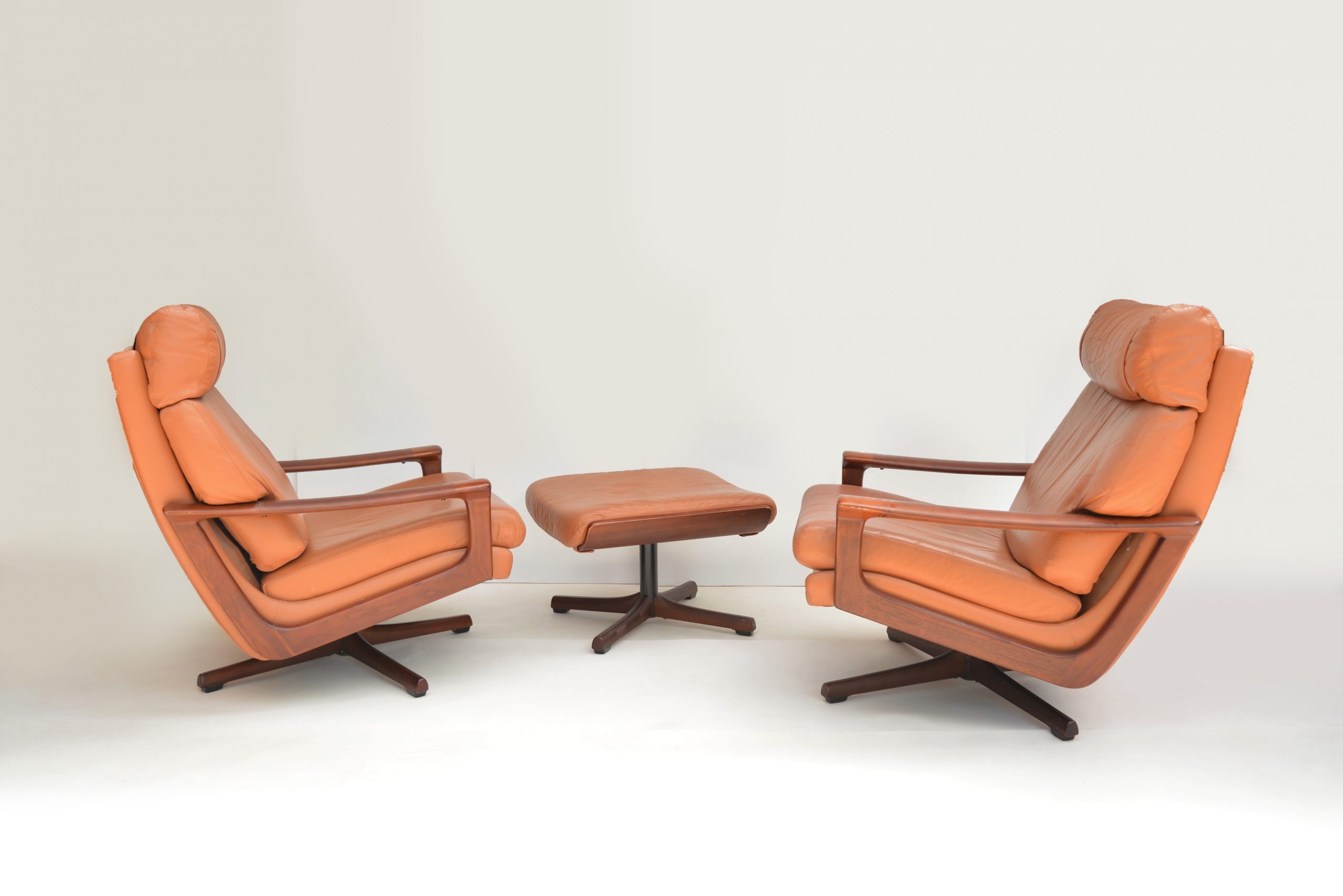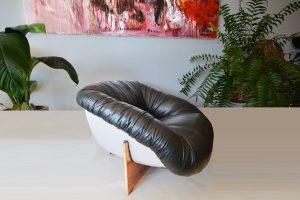Description
THE TWO PARTS TO THIS LISTING
Part 1. BUYING the Leather Care Products iNVISeDGE uses & How to Care for Leather Furniture
OR Scroll Down to Part 2. Information About Leather Types Found on Vintage Furniture ie. the difference between TOP-GRAIN and FULL-GRAIN leather
PART 1.
The leather products we use are ECO-FRIENDLY and
MADE IN AUSTRALIA
(Instructions for using these products are given after the pricing).
350ml leather cleaner = $16
350ml leather conditioner = $19.50
(Two, 350ml quantities in plastic bottles with protection for the post will fit in the small pre-paid satchel which costs $11 to most locations in Australia. (This includes $1.45 for packing).
Two, 350ml quantities with postage- $46.50 TOTAL. (Without postage- $35.50)
500ml leather cleaner = $19.80
500ml leather conditioner = $26
(Two, 500ml quantities in recycled plastic bottles with protection for the post fit in the medium pre-paid satchel which costs $14.50 to most locations in Australia. (Including $1.55 for packing).
Two, 500ml quantities with postage is- $60.30 TOTAL. (Without postage- $45.80)
If you have interest in purchasing the products we use, SMS us using the phone number on our CONTACT page.
Please note- there may be a short delay in getting leather products into the post as we can’t make a specific trip to the post office with leather products. (It should never be any more than about 10 days though.)
INSTRUCTIONS FOR USING OUR LEATHER PRODUCTS
If you look after VINTAGE FULL-GRAIN leather, it’s possible it will last a century. Most of this vintage leather is already 40 years old (sometimes older) and this leather rarely shows any deterioration. This is normal with VINTAGE Full-Grain leather furniture (from the 1960’s to mid-1980’s) WHEN IT’S LOOKED AFTER.
The main enemies of leather is human sweat and allowing the leather to dry out (this will happen if items are in the sun a lot and/or air conditioning is used in the space). Periodically clean your furniture in Winter after it’s been consistently used (approx. every 8-10 weeks). In Summer, be more diligent with cleaning the leather particularly when it’s warmer. If you know you’ve sweated a couple of times in the chairs, be sure to clean the leather. If doesn’t take long. There are salts in people’s sweat- this salt will slowly attack the leather. Do not rub the leather vigorously with the cleaning product. A light wipe over is all that’s needed. You’re neutralising the salts in people’s sweat more than anything.
I have a products I personally use to care for my Rufenacht chairs at home (which is Howe Leather, the same leather used on vintage Tessa chairs). The cleaner will clean off dirt but it does NOT froth-up when you use it. It is more about neutralising body sweat which can break down leather over time. Wiping over leather in Summer with this cleaner is enough to restore its natural PH balance. (If you don’t think your furniture has been sweated in, clean the leather every 6-8 weeks of regular use in Summer- you don’t need to overdo it!) Over time sweat will build up on the leather and slowly change the PH balance of the leather. After the PH balance has changed, every time you sweat in the leather after that, your furniture is at risk of deteriorating (cracks will slowly develop in the leather- this process is very slow with quality full-grain leather- you will see it happening over time).
Leather conditioner also helps protect your leather. The conditioner helps create a barrier so that sweat sits on top and doesn’t penetrate into the leather so always wipe it over with the conditioner after cleaning your furniture.
It isn’t optimal to have leather chairs in full-sun but there are definitely things you can do to protect them if they must go in full sun. Going away on holidays ever? Move your chairs away from the sun. If they are sometimes in the sun, keep an eye on how they’re going. They should be completely fine if you look after the leather by keeping the chairs well conditioned.
I would recommend turning leather chairs away from the sun when you think of doing it. This will fade the canvas on the back of chairs (if the back is canvas and not leather). Most vintage canvas backs are already faded anyway over the years. The canvas doesn’t look bad if the fading is consistent all over.
It’s not optimal to have leather furniture in the sun but it should be okay if you ensure the leather doesn’t dry out. Leather is a skin and to maintain elasticity you must ensure it doesn’t dry out. We’ve all seen leather dry out- it initially starts to look dry and wear down much easier- it will then become hard and will crack. Not much can be done about cracks in leather (unless they’re shallow). Prevent cracks by conditioning your leather regularly, particularly when the sun is getting your furniture (or if you’re using AIR-CONDITIONING). Wipe over gently into all areas of the leather particularly the creases. The conditioner we recommend penetrates into the leather well- it doesn’t just sit on top. Again do NOT rub vigorously. Just a light wipe over with the conditioning product on a dry cloth is enough. Wipe with care around the stitching (the cream will dry white if there’s too much on or it builds up in the stitching). Applying the conditioner when the chairs are in the sun actually helps. Heat will open up leather pores which will allow the conditioner to penetrate deeper into the leather. Don’t be afraid to condition the leather in a hot room- the heat will actually help the conditioner absorb in.
PART 2.
Vintage HOWE Leather Brochure (SEE PHOTOS ABOVE) with information on “Howe” to look after FULL-GRAIN leather (excuse the pun!). This Howe Leather brochure also outlines the difference between FULL-GRAIN and TOP-GRAIN leather. Top-Grain leather is not TOP-GRADE leather. TOP-GRAIN leather has had one or two layers of the underside cut away to make those really scary, shitty leathers! Top-Grain Leather is the top layer that remains after this has been done. It’s THIN and susceptible to rips and cracking all the way through. If you see furniture that’s about 10 or 20 years old and the leather has ripped at the seams it’s nearly always Top-Grain leather. It’s simply too thin to support the stitching properly.
Be aware of the leather you’re buying. Leathers AINT leathers anymore. Do your research BEFORE you buy anything in leather these days- particularly if the product is coming from developing countries such as China. The best quality leather is FULL-GRAIN leather which is the full leather hide. Full-grain leather has had little processing. If you look closely at full-grain leather you’ll notice that different cuts of leather has different textures. This is because leather is a natural product and the skin has different textures on different areas of the animal. For example, the skin on the back of the animal stretches over the backbone- gravity acts on it- therefore leather from this area has little texture. The texture of the skin on the underside of the animal however will have more wrinkles in it.
VINTAGE HOWE leather was used in abundance on Australian furniture made in the 1960’s and 1970’s and if it’s properly looked after it will last you for about 60 years on furniture but most likely MUCH longer! Most Australian vintage furniture in leather is currently about 45 years old but if it has been cared for vintage HOWE LEATHER is usually in AMAZING condition! I rarely see vintage Howe Leather (that has been properly cared for) with any deterioration AT ALL. It’s resilient, beautiful to touch and a NATURAL product! And it’s a by-product of the meat industry. If you buy leather furniture, you are NOT supporting the MEAT INDUSTRY, you’re supporting the idea that the leather should also be used too (and NOT just wasted)! If you’re vegan it’s worth considering this. Hopefully soon there will be RSCPA-approved leather products. That surely can’t be too far off now! Read the brochure in the photos in this listing for more information about leather.
2103 2206 lafer















